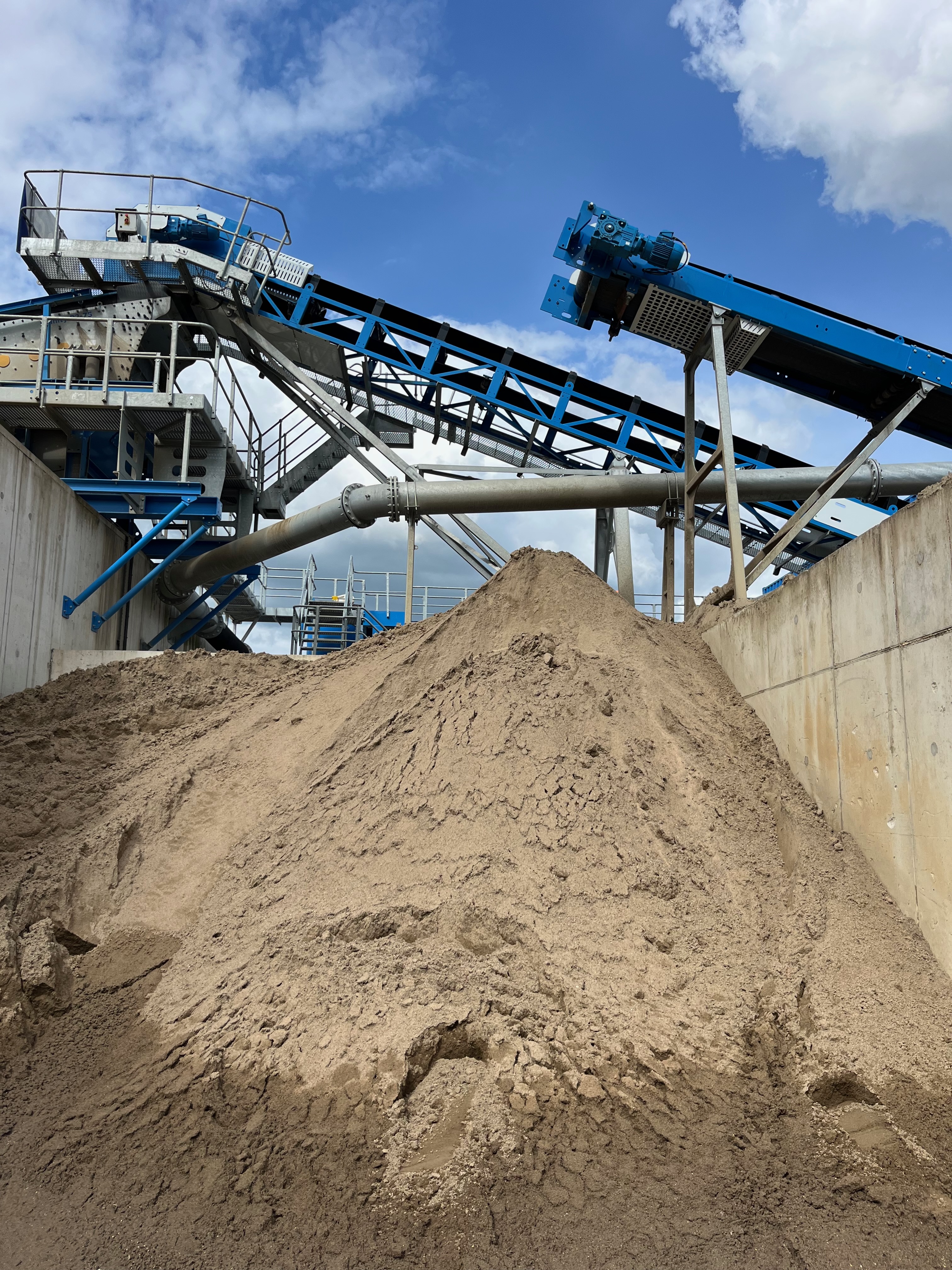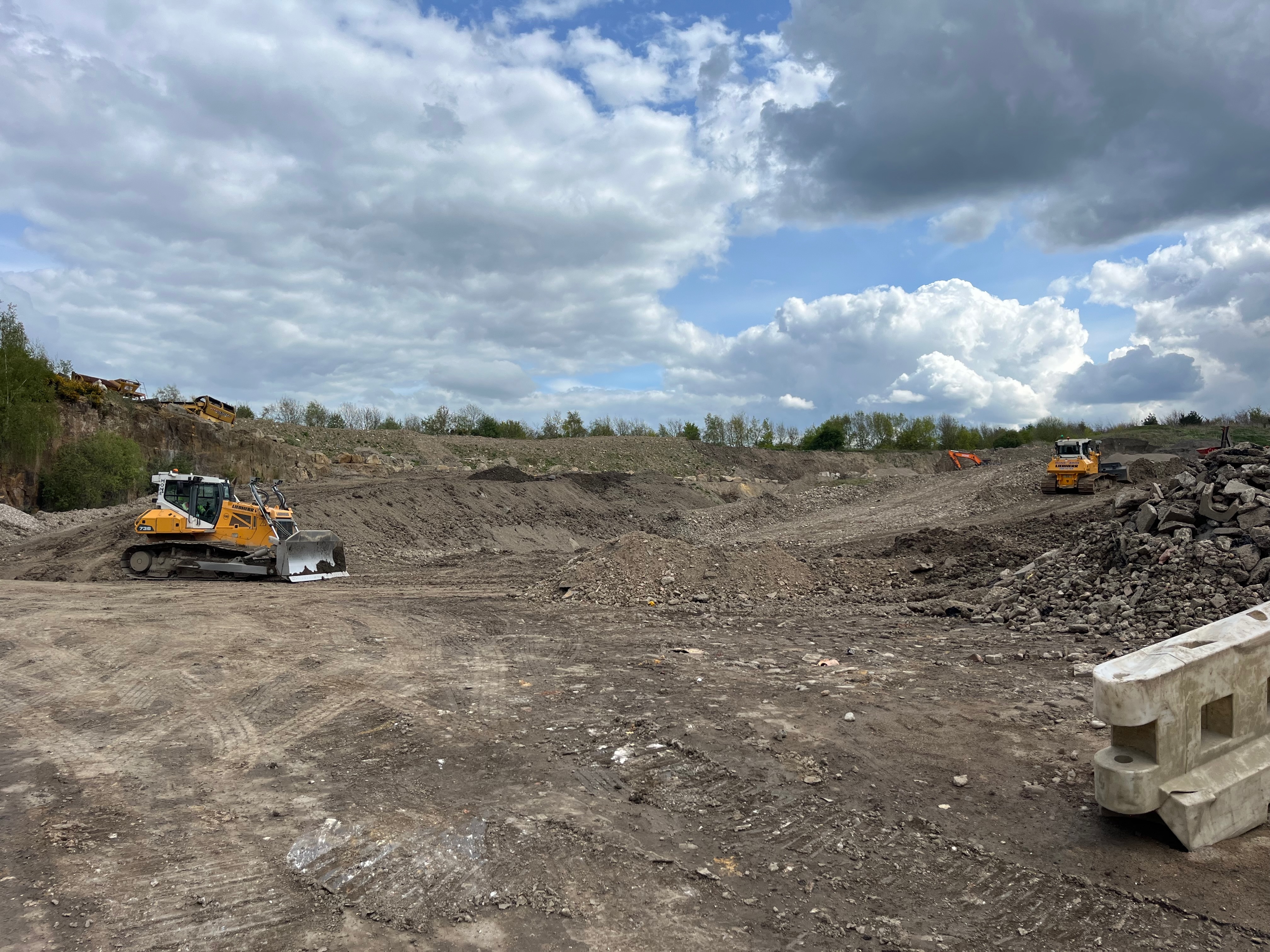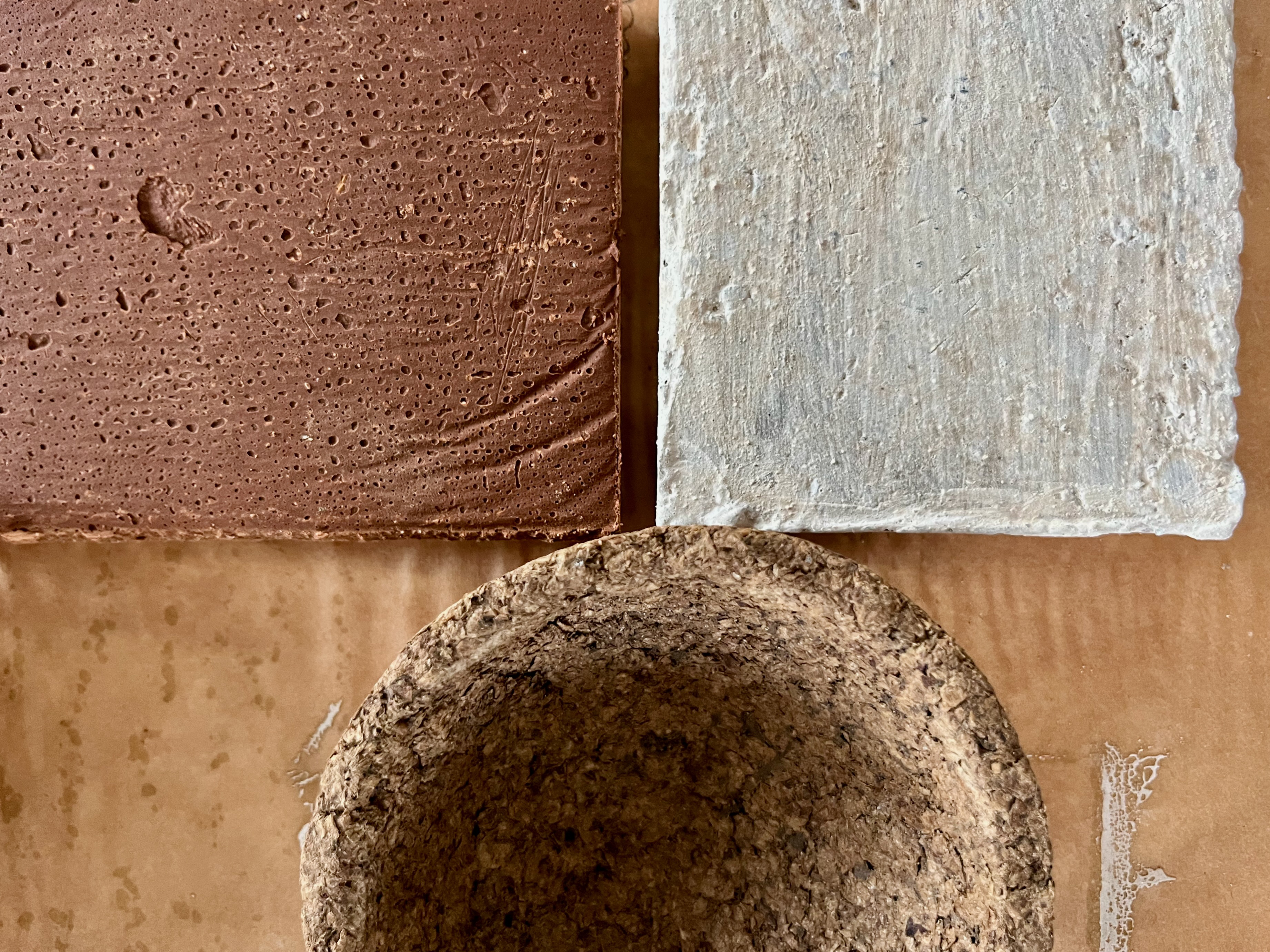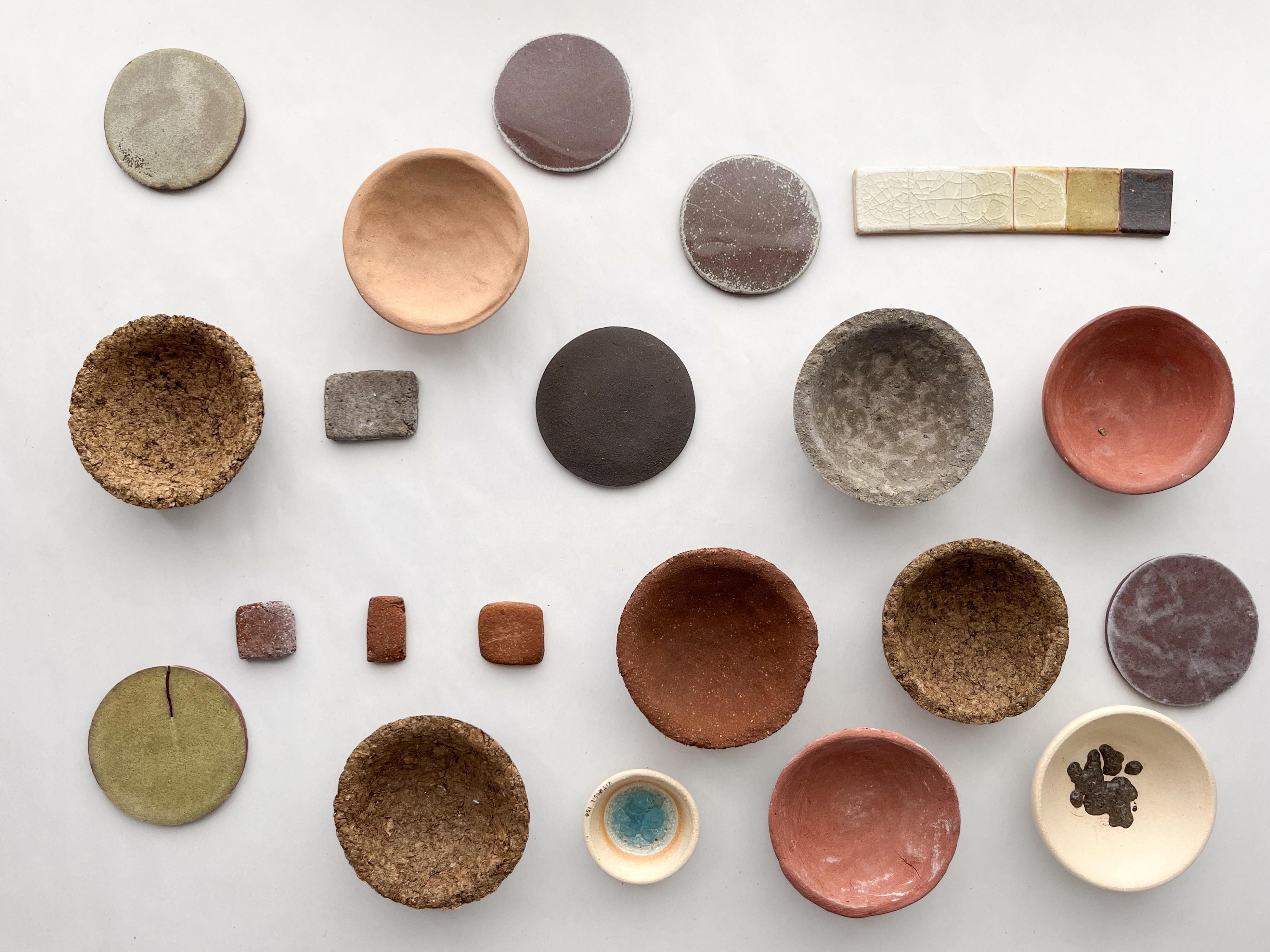Profile: Chris Crawford
As we recently discussed in our Circular Economy article, construction, demolition and excavation (CDE) waste accounts for more than 60% of the nation’s total waste output each year. While most of it is recovered through recycling facilities and used as aggregate, the finer materials like clays and silts are often overlooked. These fine by-products, though largely destined for landfill capping or flood alleviation, are now finding a new life in the hands of ceramicist and materials researcher Chris Crawford, whose applied research project Periphery Materials seeks to uncover the creative and structural potential of this recycled clay.
The project grew out of The Material Way (TMW), an interdisciplinary programme exploring sustainable making through touch, testing and material investigation. This provided the perfect framework to “re-engage with learning through materials, touch, and testing,” carried out alongside his work as studio manager at Leeds-based and ceramic-focused Sunken Studio
“I’m a hands-on person, but also drawn to systems and academic thinking,” Chris explains. “I enjoy methodical testing and scientific process as much as abstract oil painting. These sides of me are sometimes hard to reconcile, and yet I was curious to see if it was possible.” That curiosity has became an in-depth inquiry into waste-derived and bio-based material systems sourced entirely within Yorkshire. Working between ceramics, construction, and circular design, the project brings together industry partners and regional waste processors to demonstrate how local residual materials might serve as low-carbon alternatives to virgin resources.

Through the West Yorkshire Combined Authority’s (WYCA) Waste to Resources initiative, a circular economy programme inspired by the earlier National Industrial Symbiosis Programme, Chris was introduced to Mone Bros, a Leeds-based aggregates producer operating one of the UK’s most advanced construction waste wash plants. Each year, the plant separates coarse aggregates from finer particles, recovering sand, silt, and clay, processing 170,000 tonnes of CDE waste in the process. The residual fine material is pressed into dense plates of “filter cake clay” (FCC).

Visiting the plant in 2024, Chris was struck by the material’s potential. “When I visited the Mone Bros plant in October 2024, Technical Manager Steve Crossland spoke about the company’s ambition to find new applications for their recycled FCC, which currently sees limited use in flood defences or landfill capping.” With a second wash plant approved south of Leeds, the available volume of recycled clay could soon double, creating an industrial-scale opportunity for reuse.
Initial tests focused on ceramics, Chris’s area of expertise. Melt tests fired to 1220°C showed that the FCC behaved like local earthenware clays, which are unsuitable for high-temperature stoneware bodies but ideal for glaze development. “By combining FCC with waste glass, I created a range of glaze samples composed entirely of recycled materials,” he notes. The results pointed toward a low-energy, waste-based ceramic system, and the project soon expanded into masonry.

Through the Waste to Resources network, Chris connected with Bingley Stone, a Yorkshire stone specialist producing high-quality sandstone masonry. The company’s cutting process creates a fine silt slurry rich in clay minerals and feldspar, offering another promising waste stream, which Chris noticed early on shared the qualities of another common material: “On first encounter, this material had much more plastic mouldable working qualities than I had expected.” By blending the sandstone silt with small quantities of sodium alginate, a seaweed-based biopolymer, he produced a mouldable clay-like material. Fired tests at 1220°C yielded a “pleasing rouge colour ceramic-like body.” The aim now is to combine this silt with FCC to create workable, lower-firing bodies for tiles, bricks or plant pots, “fully composed of local, waste-based materials.”
Seeking to reduce embodied carbon even further, the studio has begun to explore unfired clay applications such as rammed earth and adobe. Using Mone Bros’ separated waste streams, the research tested reconstructed soil blends to develop stable, compacted blocks, reinforcing with hemp shiv, which grows well in the Yorkshire climate. And the added bonus: the plant also rapidly sequesters carbon. The result is a series of lightweight, strong clay-hemp composites that demonstrated the potential of low-tech, localised materials to meet modern building performance requirements.

Building on this success, Chris has since explored other bio-based polymers as natural binders for clay systems. This began with mixing alginate with recycled clay to form plastic-like materials that hardened on drying but suffered from shrinkage. To stabilise them, he sought fibrous additives from local waste streams. But this bump in the road led to another collaboration, this time with North Star, a Leeds coffee roastery producing around 1,800 kg of coffee chaff annually. The thin husk removed during roasting absorbent, fibrous quality made it ideal for experimentation. “I began testing various combinations of FCC, sodium alginate, and chaff,” he explains. “Once dry, it formed a hard, lightweight, cork-like material.

The final strand of testing turned toward mineral binders, exploring alternatives to carbon-intensive Portland cement. Drawing inspiration from research into alkali-activated materials (AAMs) and geopolymers, Chris experimented with combining aluminosilicate-rich FCC with recycled sodium silicate made from waste glass. As he explains, “I began experimenting with FCC, wood ash, and commercial sodium silicate. These mixes hardened into dense, concrete-like materials, enough of a success to prompt further exploration.” Subsequent trials used finely ground glass waste from CT Glass in Bradford, following a low-temperature process for sodium silicate synthesis. The experiments yielded a strong adhesive gel, though balancing chemical ratios remains a challenge. The potential is significant: if scaled, such recycled binders could replace a portion of traditional cement, reducing both emissions and reliance on virgin materials.
Periphery Materials points toward a circular, regionally grounded materials economy. Yet, as Chris observes, the next step requires systemic support:
“Interesting materials research, coming from cross-disciplinary fields and collaborative projects, is increasingly coming out of art schools and industry. Yet many projects fall down where they cannot progress through the refinement, testing and certification stages necessary to turn nascent ideas into new low carbon, waste-based materials that can have real impact.”
The next stage would benefit from more programmes like Waste to Resources, linking designers and researchers with testing labs, policy-makers and incubators. Chris’ in-depth and innovative experimentation is matched by his ambitions for the project, with hopes of “finding a site to build a physical demonstrator building for bio and waste-based materials research and interdisciplinary collaboration in the Yorkshire bio-region.”
For now, Periphery Materials stands as both proof of concept and invitation: an example of how curiosity, collaboration and local waste can combine to shape the materials of the future.
If the project resonates with you and your own practice, why not drop him an email.

